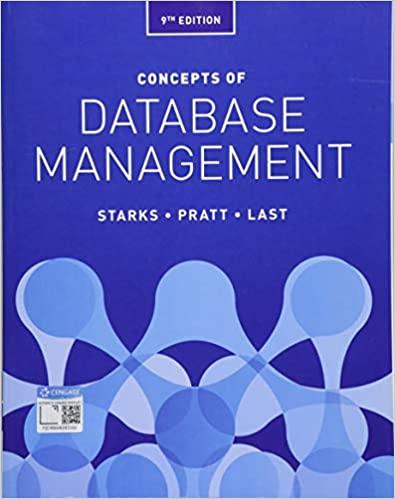Question
First Come First Serve CPU scheduling algorithm in C programming using Linked Lists. The program will be invoked as follows: ./sched [limit] is the name
First Come First Serve CPU scheduling algorithm in C programming using Linked Lists.
The program will be invoked as follows:
./sched
-
is a positive integer number representing the process id of the process -
is a non-negative integer number given in milliseconds representing the arrival time of the process
-
is a positive integer number indicating the amount of CPU-time that the process requires
-
is a non-negative integer number indicating the priority of the process. Lower number indicates a higher priority.
For example, the following can be a sample input file:
1 0 4 70 2 4 19 120 3 9 5 100 4 14 3 0 5 16 2 3 6 23 2 20
Each line of the input file represents a different process, starts without any space, ends with a newline, and there is a single space (' ') in between each field in a line. Note that the example input file provided above is just for illustration purposes. Your program will be tested using input files containing much larger number of processes. Here is more information about the content of the input file:
All three fields are guaranteed to appear in the input file. Processes are sorted by their arrival times in increasing order. Processes have unique arrival times. Arrival time of the first process is guaranteed to be 0.
The results in the output file should appear in sorted (increasing) order with respect to their
-
is a positive integer number in milli seconds representing the completion time of the process with respect to its
-
is a non-negative integer number in milliseconds representing the total time that the process waited in the ready queue
- [limit] is an optional command-line argument. If this argument is not provided, then you will simulate the whole input file until its end; otherwise, you will only simulate the first [limit] processes. For instance, if limit is given as 10, then you will only simulate the first 10 processes and you program will terminate without simulating the rest of the input file. [limit] is a positive integer less than or equal to the number of lines in the input file.
Step by Step Solution
There are 3 Steps involved in it
Step: 1

Get Instant Access to Expert-Tailored Solutions
See step-by-step solutions with expert insights and AI powered tools for academic success
Step: 2

Step: 3

Ace Your Homework with AI
Get the answers you need in no time with our AI-driven, step-by-step assistance
Get Started


